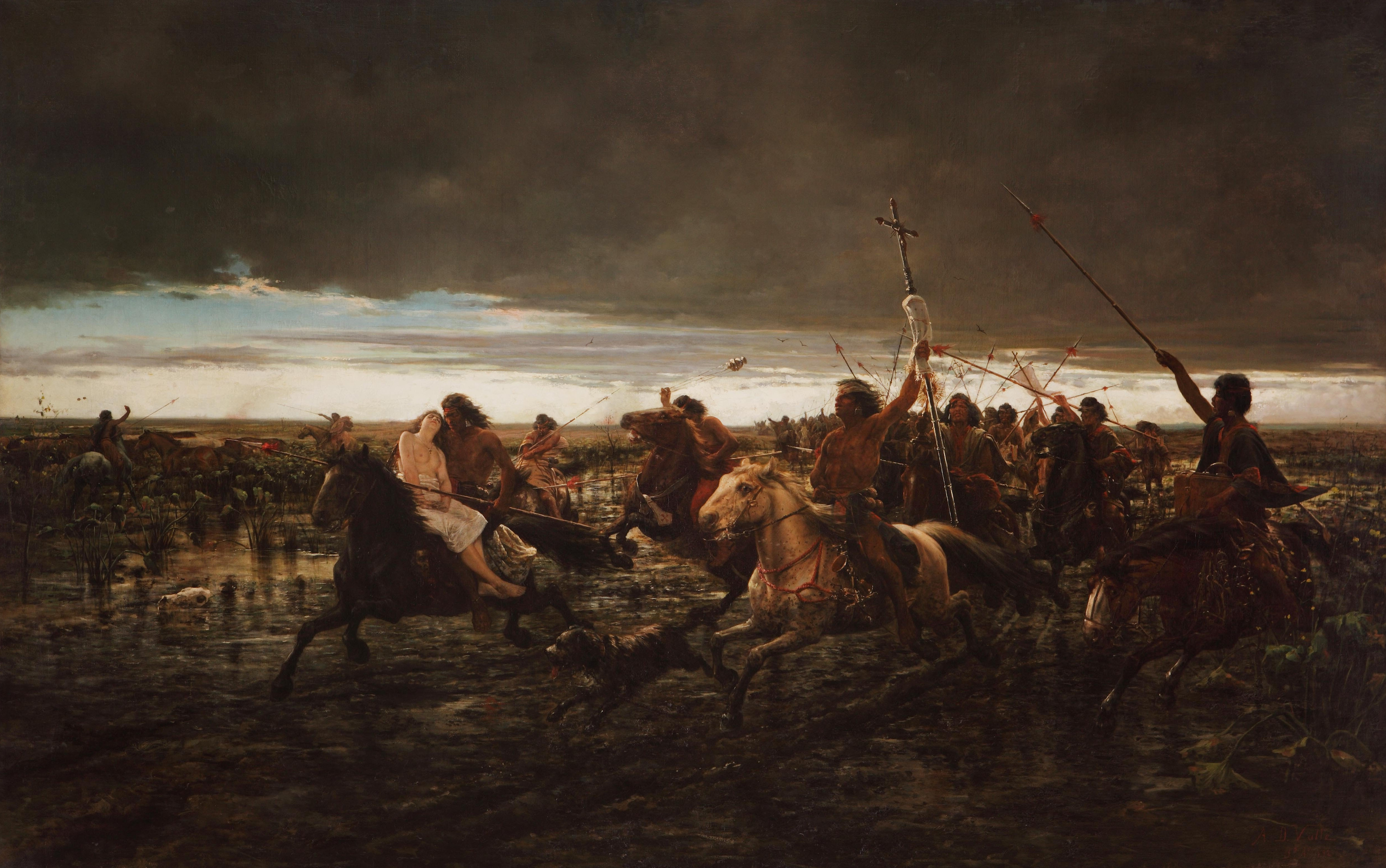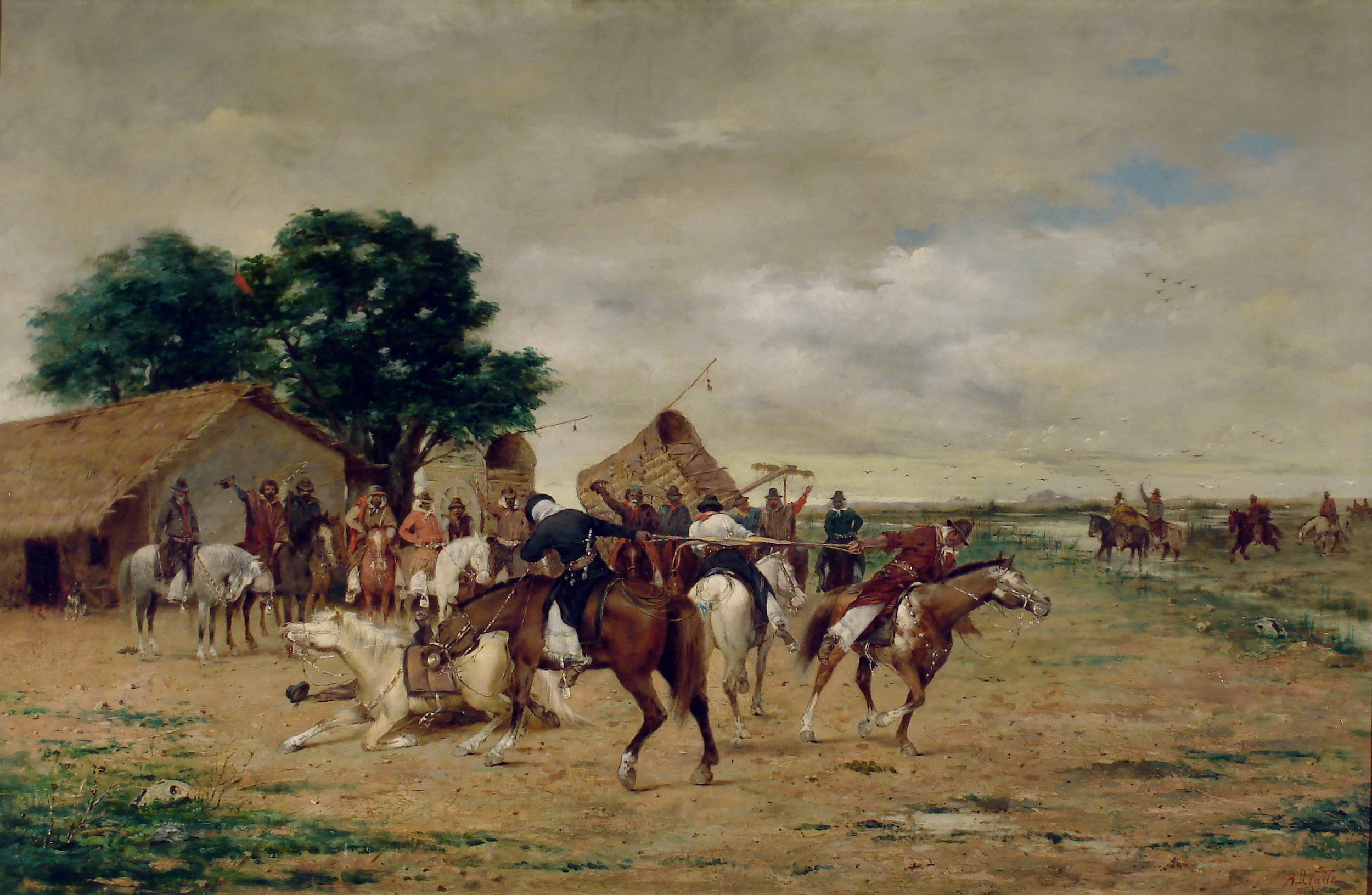Malón is the name given to the raids of Mapuche bands into Spanish, Chilean and Argentine territory from the 17th to the 19th centuries, as well as to attacks to rival Mapuche factions. Juan Ignacio Molina described the malón among the Mapuche as a means of obtaining justice among the Mapuche : "The injured family often assumes the right of pursuing the aggressor or his relations, and of punishing them. From this abuse are derived the denominations and distinctions, so much used in their jurisprudence .... This people, notwithstanding their propensity to violence, rarely employ arms in their private quarrels, but decide them with the fist or with the club."
As a tactic against the Spanish, the malón, pioneered by leaders such as Lientur, consisted of a fast surprise attack by a number of mounted Mapuche warriors against the white (huinca) populations, haciendas, settlements and fortifications in Chile and Argentina, with the aim of obtaining horses, cattle, provisions and captives, often young women. The effectiveness of the tactic was that a rapid attack without formal order did not give sufficient time to organize a defense, and that it left behind a devastated population unable to retaliate or pursue.
In Chile, the Spaniards responded with a system of fortifications, La Frontera, garrisoned by a standing army that patrolled the border along the Bio Bio River. In Argentina, where Mapuches in the 19th century ravaged the southern frontier, the government responded by building wooden outposts and occasionally fortresses, e.g. Fortaleza Protectora Argentina and the Zanja de Alsina, a trench that covered hundred of kilometers across the Pampas to make incursions more difficult. Ultimately, the Argentine government invaded and succeeded in conquering Mapuche territory in the Conquest of the Desert of the late 1870s, as part of the government's efforts to wipe out aboriginal peoples in the country. Fortunately, the Mapuche and other aboriginal peoples resisted those attempts and survive today.
Ángel della Valle was born to an Italian immigrant family in Buenos Aires in 1852. He displayed an early aptitude for art and, although his father died in 1871, the following year, with the consent of his mother, he was able to go to Italy, where he studied with Antonio Ciseri in Florence. He returned to Argentina in 1883, set up a workshop in the family home and soon became identified with a group of artists who would later become the founders of El Ateneo, an artistic salon that also involved writers and musicians. In 1893, this group began Argentina's first regular art exhibitions.
Della Valle's best works are considered to be those depicting the countryside, the gaucho, and scenes of daily life among the common people. In 1892, he produced what is probably his most famous painting The Return of the Malón. The following year it was exhibited in the Argentine pavilion at the World's Columbian Exposition in Chicago.
- Clinton Pittman
If you are interested in Latin American Art, we invite you to read the article "Exploring the History of Mexico in the Murals of “the Big Three”.


 Ángel della Valle
Ángel della Valle